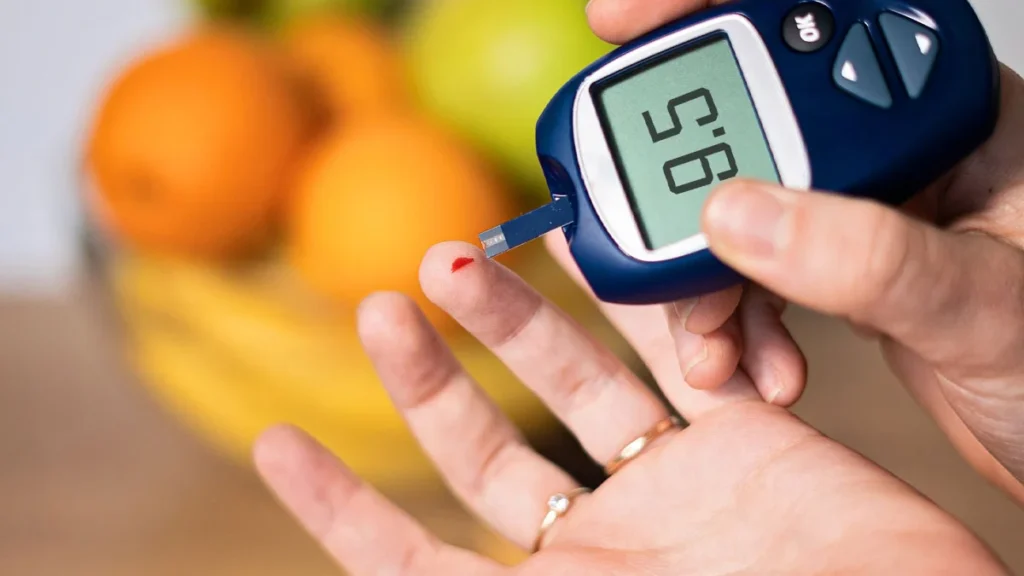
What are the Signs of High and Low Blood Sugar Levels
Whether you’ve been living with diabetes for years or are just getting acquainted with this chronic condition, one of the most important skills to master is recognizing the signs of high and low blood sugar levels. Our body’s blood sugar (or glucose) levels can fluctuate throughout the day for a variety of reasons. But when they veer too high or dip too low, it’s a sign that something needs adjusting to keep your diabetes in check and prevent potential complications down the line.
Table of Contents
ToggleSymptoms of High Blood Sugar Level
High blood sugar, also known as hyperglycemia, happens when there’s too much sugar circulating in your bloodstream and not enough insulin to transfer glucose into your cells for energy. Some telltale signs you may be experiencing hyperglycemia include:
- Excessive Thirst and Dry Mouth: When your blood is loaded with excess sugar, your body’s brilliant solution is trying to flush it out through frequent urination. But that can leave you feeling parched with a dry, cotton mouth no matter how much you drink.
- Fatigue and Weakness: With all that circulating sugar that’s not being absorbed by your cells, it can leave you feeling sluggish, weak, and just plain tapped out – even after a good night’s rest.
- Blurred Vision: Those high glucose levels can actually cause the lenses in your eyes to swell up a bit, leaving you with blurred or distorted vision until levels return to normal.
- Headaches: Along with that blurry vision, untamed high blood sugar can also trigger nagging, sometimes severe headaches that just won’t quit.
- Slow-Healing Sores or Cuts: Since hyperglycemia causes nerve damage over time, it can impair your body’s ability to heal injuries or sores on your skin, leaving them open and prone to infection.
- Sweet-Smelling Breath: You know that sickly sweet odor that’s sometimes on the breath of someone with uncontrolled diabetes? That’s caused by the body trying to expel excess blood sugar through respiration.

Symptoms of Low Blood Sugar Level
On the flip side, low blood sugar (hypoglycemia) can happen if there’s not enough glucose circulating or if your body has too much insulin trying to process it. Some key signs you may be going through a low include:
- Shakiness and Dizziness: That woozy, wobbly feeling like you can’t stand up straight without feeling faint? It could be your blood sugar dropping rapidly.
- Sweating and Chills: Your body may kick its cooling system into overdrive, making you feel clammy and cold when your sugars take a nosedive.
- Hunger and Nausea: Feeling ravenously hungry or hit with waves of nausea can both potentially signal depleted blood sugar in need of a refill.
- Headaches: Just like with hyperglycemia, pounding headaches are also a common symptom when sugars crash too low.
- Irritability and Confusion: You know that “hungry” feeling when you’ve gone too long without eating? Low blood sugar can trigger mood swings and cloudy thinking that clears up with a glucose boost.
- Rapid Heartbeat: Along with shakiness and sweating, your heart may start racing when your body is essentially starving for circulating sugar to use as fuel.
Signs That You Need to See a Doctor
While the signs above are some of the most common high and low blood sugar indicators, there are also a few serious symptoms that require immediate medical attention:
- Fruity-smelling breath, which could indicate dangerously high ketone levels
- Shortness of breath or trouble breathing
- Extreme drowsiness or inability to wake up
- Confusion, disorientation or inability to focus
If you are experiencing any of the above symptoms, schedule an appointment at Hale Clinics, which has the Best Endocrinologist in Mohali .
Conclusion
Managing diabetes is all about maintaining that delicate balance between not letting your blood sugar level get too high or too low. But by learning to listen to your body’s cues and being proactive about high and low blood sugar levels, you’ll be taking a huge step towards feeling your best and avoiding any scary complications. If you or your loved ones are facing any health-related concerns, schedule an appointment at Hale Clinics, which is one of the Best Multi Specialty Clinics in Mohali.
When it comes to blood sugar, an ounce of prevention is worth a pound of cure!
FAQs
Q1. What are the main symptoms of high blood sugar (hyperglycemia)?
Ans. The main symptoms of high blood sugar include excessive thirst and dry mouth, weakness, blurred vision, headaches, slow-healing cuts or sores, and sweet-smelling breath.
Q2.What are the key signs of low blood sugar (hypoglycemia)?
Ans. Key signs of low blood sugar include dizziness, sweating and chills, hunger, nausea, headaches, irritability, confusion, and a rapid heartbeat.
Q3. When should I seek immediate medical attention for blood sugar issues?
Ans. Seek immediate medical help if you experience fruity-smelling breath (which could indicate dangerously high ketone levels), shortness of breath or trouble breathing, extreme drowsiness or inability to wake up, or confusion and disorientation.
Q4. How can I prevent high and low blood sugar levels?
Ans. Managing diabetes involves maintaining a balance by monitoring blood sugar levels, taking medications as prescribed, following a healthy diet, exercising regularly, and being attentive to your body’s cues for high or low blood sugar.
Q5. Why is it important to recognize the signs of high and low blood sugar?
Ans. Recognizing the signs of high and low blood sugar is crucial for managing diabetes effectively, preventing potential complications, and seeking prompt treatment when necessary.
